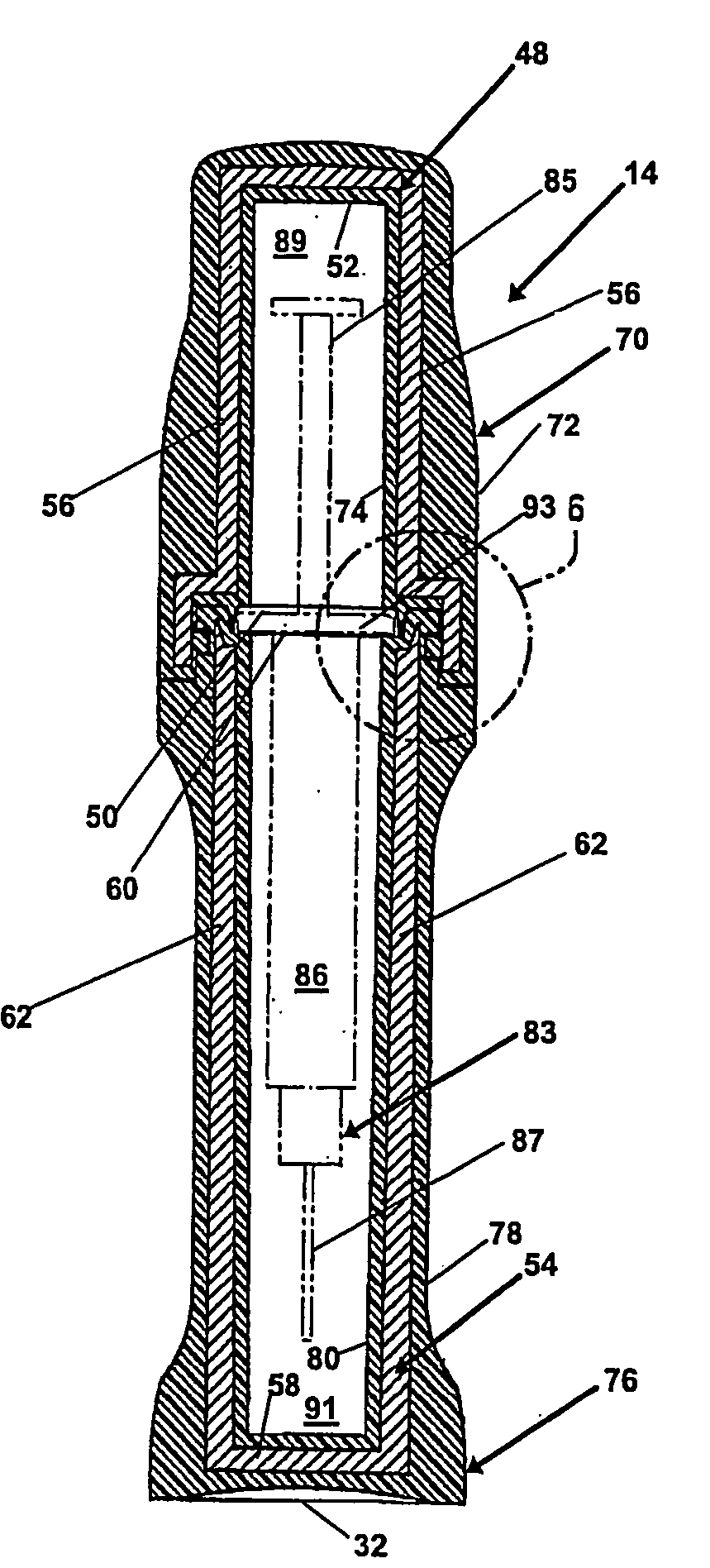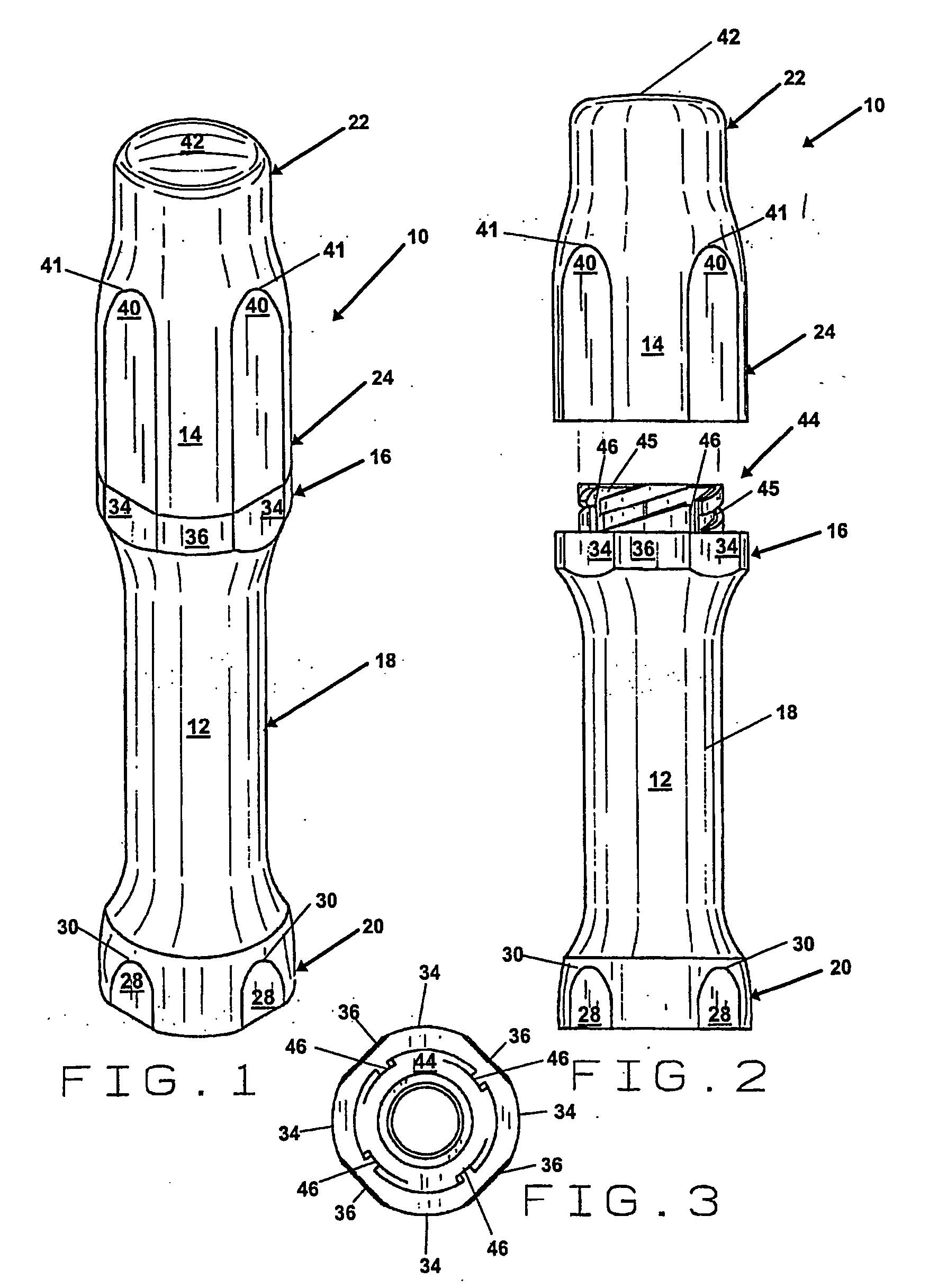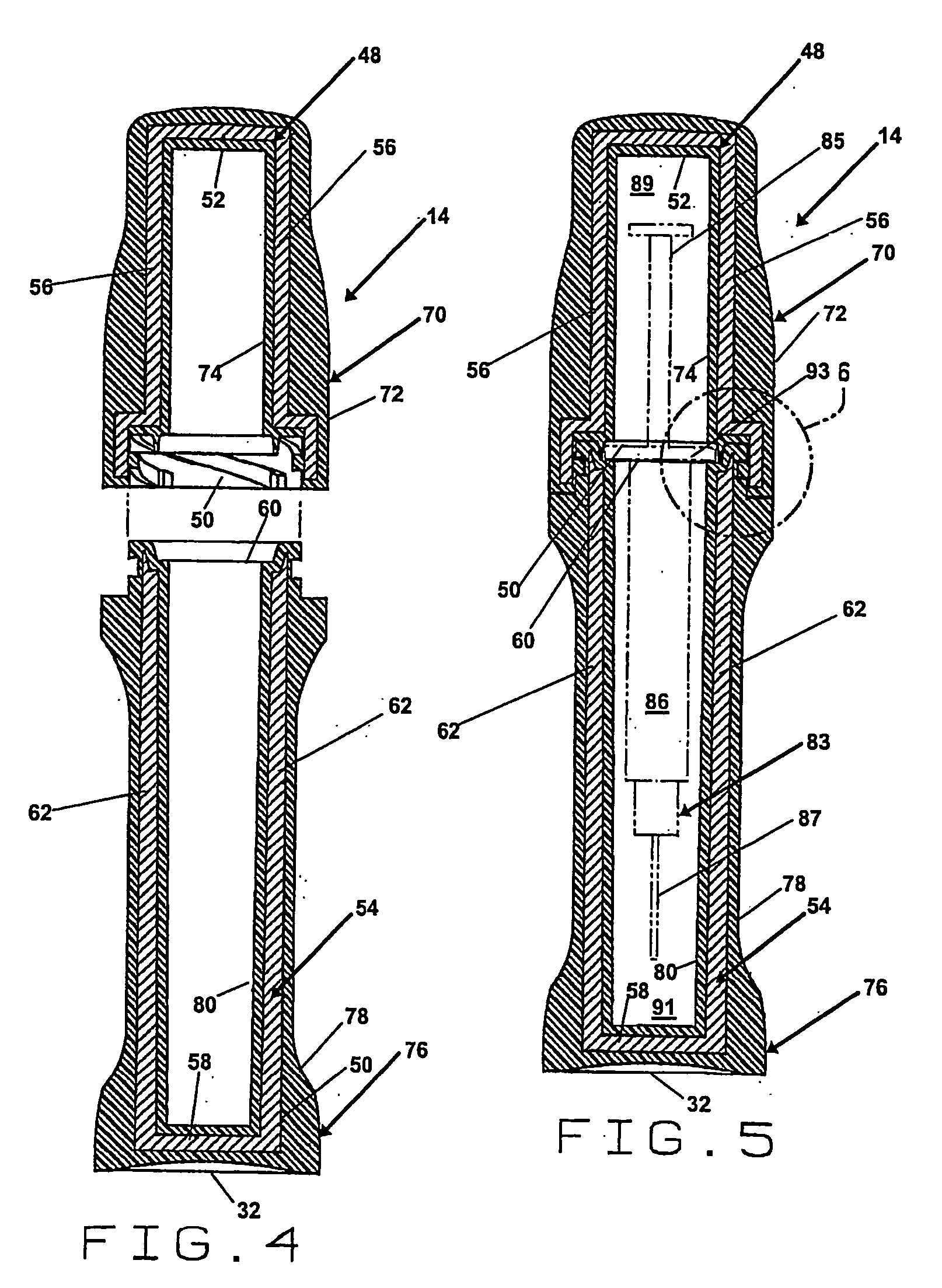Polymer pharmceutical pig and associated method of use and associated method of production
- Summary
- Abstract
- Description
- Claims
- Application Information
AI Technical Summary
Benefits of technology
Problems solved by technology
Method used
Image
Examples
Embodiment Construction
[0025]FIG. 1 is a perspective view of the embodiment of the pharmaceutical pig of the present invention that is generally indicated by numeral 10. There is an elongate base 12 and an elongate cap 14. The elongate base 12 and the elongate cap 14 of the pharmaceutical pig 10 can be formed in any of a wide variety of shapes and sizes, however, a substantially cylindrical shape is preferred. Preferably, the elongate base 12 includes a top portion that is generally indicated by numeral 16 having a first diameter, a middle portion that is generally indicated by numeral 18 having a second diameter and a bottom portion that is generally indicated by numeral 20 having a third diameter. The elongate cap 14 includes a top portion that is generally indicated by numeral 22 having a fourth diameter and a bottom portion that is generally indicated by numeral 24 having a fifth diameter. In the preferred embodiment, the second diameter of the middle portion 18.of the elongate base 12 is less than th...
PUM
| Property | Measurement | Unit |
|---|---|---|
| Angle | aaaaa | aaaaa |
| Angle | aaaaa | aaaaa |
| Diameter | aaaaa | aaaaa |
Abstract
Description
Claims
Application Information
 Login to View More
Login to View More - R&D
- Intellectual Property
- Life Sciences
- Materials
- Tech Scout
- Unparalleled Data Quality
- Higher Quality Content
- 60% Fewer Hallucinations
Browse by: Latest US Patents, China's latest patents, Technical Efficacy Thesaurus, Application Domain, Technology Topic, Popular Technical Reports.
© 2025 PatSnap. All rights reserved.Legal|Privacy policy|Modern Slavery Act Transparency Statement|Sitemap|About US| Contact US: help@patsnap.com



